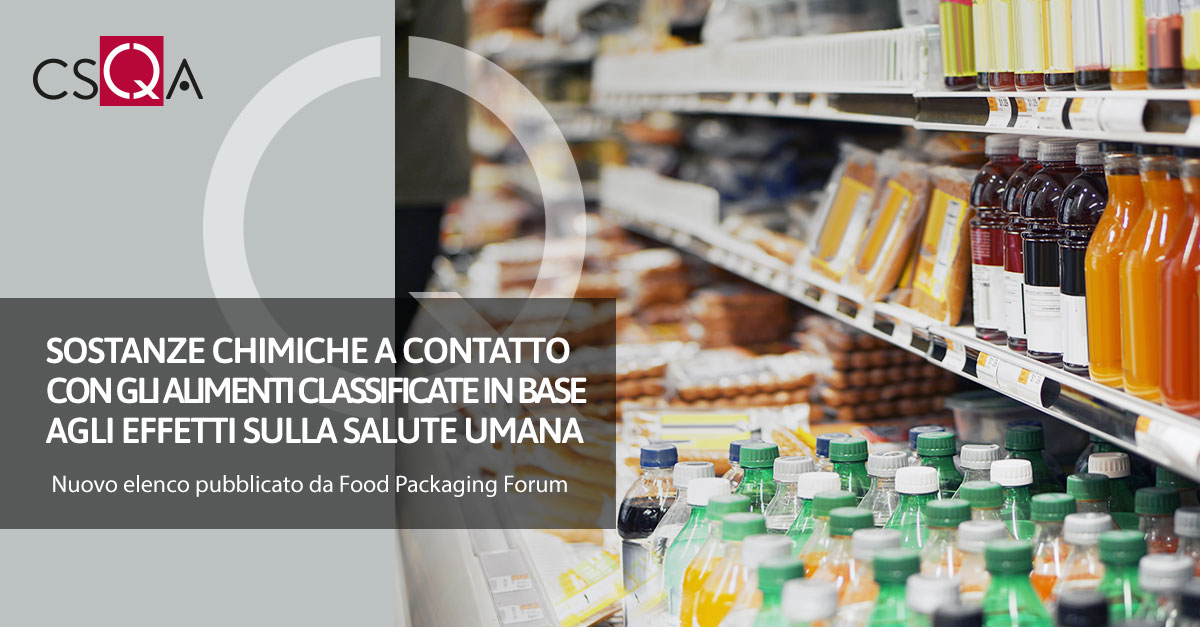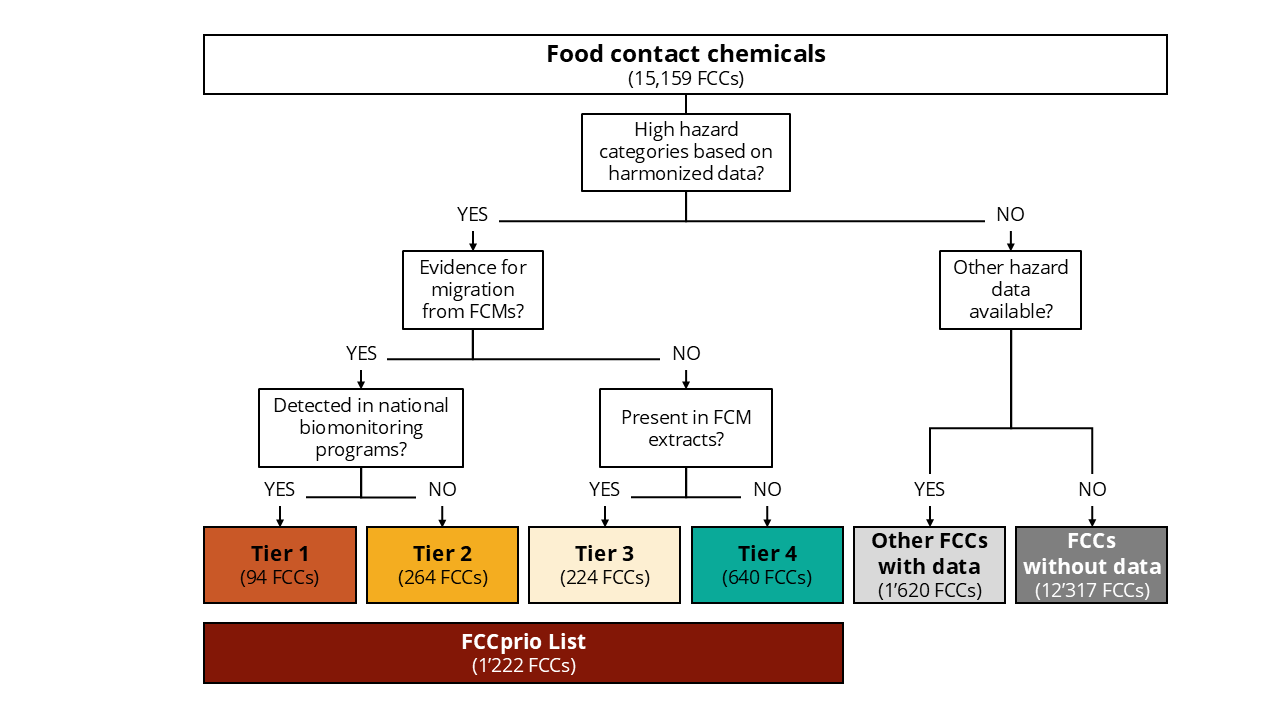 The Food Contact Chemicals List (FCCprio) is the most comprehensive attempt to identify and prioritize food contact chemicals (FCCs) for phase-out and avoidance based on their hazardous properties and evidence of human exposure.
The Food Contact Chemicals List (FCCprio) is the most comprehensive attempt to identify and prioritize food contact chemicals (FCCs) for phase-out and avoidance based on their hazardous properties and evidence of human exposure.Researchers at the Food Packaging Forum (FPF) combined publicly available harmonized hazard classifications from organizations such as the European Chemicals Agency, the U.S. Environmental Protection Agency, the Japanese GHS, and others , with exposure data from the FCCmigex and FCChumon datasets comparing all 15,159 known FCCs to create a tiered hazard list.
The methodology used in creating the FCCprio list follows an evidence-based approach, adapting the framework of the PlastChem report to focus specifically on human health risks.
In total, 1,222 FCCs have been identified as hazardous and placed on the FCCprio list and internally classified based on their relevance to human exposure from FCMs.
To be included in the list, the chemical presents at least one hazard of concern to human health : persistence, bioaccumulation, mobility, carcinogenicity, mutagenicity, reproductive toxicity, specific target organ toxicity after repeated exposure or endocrine disruption.
Each priority chemical was then mapped onto human exposure evidence and ranked into four tiers (Figure 1).

Figure 1 Methodology applied for hazard-based prioritization and further classification of FCCs based on exposure. FCC = Food Contact Chemicals; MOCA = Food Contact Materials.
Tier 1 (94 chemicals) includes the substances with the strongest evidence of exposure, having been found to migrate from food contact materials (FCMs) and detected in humans through national biomonitoring programmes.The level is dominated by well-studied groups such as ortho-phthalate plasticizers, some metals/metalloids (e.g. lead, cadmium) and many per- and polyfluoroalkyl substances (PFAS).
Tiers 2-4 include a further 1,128 substances with decreasing evidence of exposure , i.e. evidence of migration, presence or potential use in FCMs.
In addition to the priority list, researchers identified another 1,173 FCCs that may be of concern due to environmental hazards or tentative toxicity signals.
Surprisingly, no harmonized hazard information was found for approximately 81% of all known FCCs (12,317 substances), highlighting a significant data gap that poses challenges for regulators, brands and consumers alike.
The FCCprio list is freely accessible on Zenodo as an Excel file and will be updated as new hazard classifications or exposure studies are published.
This list has already been used in initiatives such as the UP Scorecard, which helps companies avoid hazardous chemicals in packaging design.
This rigorous process aims to ensure broader consensus on hazard classification and provide a clearer understanding of which chemicals pose risks when in contact with food.
As research into food safety and chemical exposure continues to evolve, the FCCprio listing represents a critical step toward ensuring safer food contact materials.
Stakeholders are encouraged to engage with the database, identify data gaps, and contribute to ongoing research efforts to improve the understanding of food contact chemicals, ultimately promoting safer food environments for consumers. (Source: https://foodpackagingforum.org/ )